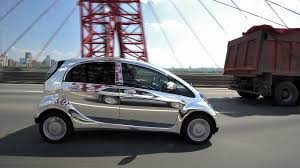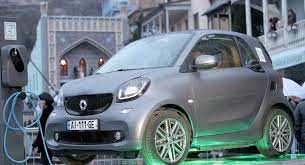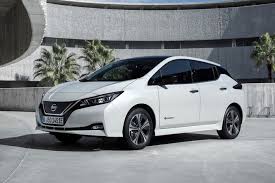Head of Volkswagen advanced technology Center: “our batteries prolong the life of the car»
 Frank bloom explains in an interview how batteries change a car, what drivers need to know about charging their electric cars, and what advances can be expected in the next generations of battery technology.
Frank bloom explains in an interview how batteries change a car, what drivers need to know about charging their electric cars, and what advances can be expected in the next generations of battery technology.
Many people face uncertainty when they buy an electric car. Can they be sure the batteries will work?
Yes, certainly. For our new electric models we have created batteries at affordable prices, which have enough capacity to store energy to provide a power reserve on a single charge up to 550 km. Previously, battery modules were distributed in different places of the car, but now the battery is compactly located between the axles in the bottom of the body. This means that we have a Central point of energy distribution. This is one of the great advantages of our new MEB electric platform.
How long do the batteries last?
Our goal is to keep our batteries running as long as electric cars. We guarantee a minimum throughput of 70% for 8 years or 160,000 kilometers. Drivers can also affect battery life. Normal charging is better for batteries than fast, and charging batteries up to 80% instead of 100% also increases their lifespan.
Isn’t it more practical to charge an electric car fully?
In most cases, 80% of the charge is more than enough to travel short distances around the city, to work or to the store. You plan a trip and charge the electric car if necessary. Of course, there are customers who want to charge their electric car 100%. To meet this need, Volkswagen is working with other automakers to build a network of fast charging stations on European motorways. This will especially help customers who go on long trips, for example, on vacation.
Can you describe how the battery works?
The battery systems in our new electric models are flat and located between the axles in the bottom of the electric vehicle. They have a shape similar to a chocolate bar. Each battery system consists of modules, which in turn consist of separate elements. The advantage of this modular structure is its flexibility. The greater the power reserve that an electric vehicle must have, the more modules can be included in the battery system. But the basic structure is always the same. This makes our production cost-effective.
Is there research on the next generation battery? What real improvements can be expected?
We have made tremendous progress in recent years. For example, since 2014, the specific energy of lithium-ion batteries has doubled, which allowed us to expand the range of our new electric cars. I expect further significant advances in lithium-ion technology — though not at the same rate. The next big step is probably going to be to solid state batteries. We are working intensively on this technology with our partner QuantumScape.
What can solid state batteries do and when will they be ready to use?
Solid-state batteries have an even higher energy density than modern lithium-ion batteries, and therefore provide a greater power reserve. They are also lighter, more economical and can charge faster. But it will be several years before they are ready for large-scale industrial production. It could be somewhere between 2025 and 2030.
As Volkswagen is conducting a study of batteries?
In addition to group research, the Salzgitter Centre of excellence plays a key role, where we combine our expertise and develop the technology further. Our experts in the Center of excellence work in all areas — from the development of battery cells to their production and processing. We also have a center where our experts conduct extensive tests. Batteries must operate in extreme conditions for several days and weeks before they are approved for use in electric vehicles. This year, a line will be launched in Salzgitter to help expand our knowledge of production processes. The centre will play an important role in shaping future developments and ensuring productivity, cost and quality.
Raw materials are a critical issue in battery production. Can you guarantee that the extraction of raw materials for batteries does not violate human rights?
We insist that all our suppliers provide humane mining conditions and we check that they comply with our agreements. We do not want to make any profit from child or forced labor. Human rights advocacy is an integral part of Volkswagen AG’s demands for sustainable development. All our suppliers are also required to agree to comply with environmental, social and regulatory standards.
Cobalt is considered a particularly problematic raw material. How do you deal with it?
We use only commercially mined cobalt for our batteries. Companies that buy cobalt from illegal small-scale mining operations are not accepted into our supply chain. We also join initiatives to protect human rights and the environment. One example is the responsible minerals Initiative, which is developing a certification system for metallurgical enterprises. In addition, there will be significantly less cobalt in future generations of battery cells. This will help reduce costs and increase energy density. In the medium term, we will reduce the cobalt content from 12-14% to below 5%. It is also possible that one day there will be batteries without cobalt at all.
The Volkswagen Group plans to launch a major campaign on electric mobility with almost 70 models of electric vehicles and a correspondingly high need for batteries. What role do partnerships play here?
To create new models on the MEB platform, we are currently working with three partners as strategic suppliers of battery cells. It LG Chem and SKI for Europe and CATL for China. SKI will also supply our batteries for the US market. In addition, we have recently joined European partners to form the European battery Union, which will promote battery research across Europe. This new consortium will cover the entire battery chain, and joint research is expected to begin in early 2020. The main objective is to gain more experience in the manufacture of battery cells.
Recall, Volkswagen wants to produce electric vehicles with minimal CO2 emissions at all stages of production.




